Sometimes, we see the log odds ratio instead of the odds ratio The log OR comparing women to men is log(144) = 036 The log OR comparing men to women is log(069) = 036 log OR > 0 increased risk log OR = 0 no difference in risk log OR < 0 decreased risk Odds Ratio 0 5 10 15 More on the Odds Ratio Log Odds Ratio4 2 0 2 4As an extreme example of the difference between risk ratio and odds ratio, if action A carries a risk of a negative outcome of 999% while action B has a risk of 990% the relative risk is approximately 1 while the odds ratio between A and B is 10 (1% =Odds ratios (OR) are commonly reported in the medical literature as the measure of association between exposure and outcome However, it is relative risk that people more intuitively understand as a measure of association Relative risk can be directly determined in a cohort study by calculating a risk ratio (RR)

Calculation And Interpretation Of Odds Ratio Or And Risk Ratio Rr Youtube
Risk ratio vs odds ratio formula
Risk ratio vs odds ratio formula-About Press Copyright Contact us Creators Advertise Developers Terms Privacy Policy & Safety How works Test new features Press Copyright Contact us CreatorsThe formula can also be presented as (a × d)/ (b × c) (this is called the crossproduct) The result is the same (17 × 248) = (/4216) = 371 The result of an odds ratio is interpreted as follows The patients who received standard care died 371 times more often than patients treated with the




3 5 Bias Confounding And Effect Modification Stat 507
In a control group The odds ratio (OR) is the odds of an event in an experimental group relative to that in a control group An RR or OR of 100 indicates that the risk is comparable in the two groups A value greater than 100 indicates increased risk;Odds is the number having the outcome divided by the number not having the outcome The risk or odds ratio is the risk or odds in the exposed group divided by the risk or odds in the control group A risk or odds ratio = 1 indicates no difference between the groupsThe odds ratio for lettuce was calculated to be 112 How would you interpret the odds ratio?
The relative risk (or risk ratio) is an intuitive way to compare the risks for the two groups Simply divide the cumulative incidence in exposed group by the cumulative incidence in the unexposed group where CI e is the cumulative incidence in the 'exposed' group and CI u is the cumulative incidence in the 'unexposed' groupEnglishwise, they are correct it is the odds and the odds are based on a ratio calculation It is not , however, the odds ratio that is talked about when results are reported The odds ratio when results are reported refers to the ratio of two odds or, if you prefer, the ratio of two odds ratios That is, let us writeTo understand what an odds ratio means in terms of changes in numbers of events it is simplest to first convert it into a risk ratio, and then interpret the risk ratio in the context of a typical control group risk, as outlined above The formula for converting an odds ratio to a risk ratio is provided in Chapter 12 (Section
Stated differently, it reports the number of events to nonevents While the risk, as determined previously, of flipping a coin to be heads is 12 or 50%, the odds of flipping a coin to be heads is 11, as there is one desired outcome (event), and one undesired outcome (nonevent) (Figure 1) Open in a separate windowLet us now look at the relation between the relative risk and the odds ratio (Zhang and Yu, 1998) OR= ˇ 1 1 1ˇ 1 ˇ 2 1 ˇ 2 = ˇ ˇ 2 1 2 1 1 = RR 2 1 (21) From this we see that OR is always further away from 1 than RR But, more importantly, we see that the odds ratio is close to the relative risk if probabilities of the outcome are small (Davies et al, 1998)Logistic Regression and Odds Ratio A Chang 1 Odds Ratio Review Let p1 be the probability of success in row 1 (probability of Brain Tumor in row 1) 1 − p1 is the probability of not success in row 1 (probability of no Brain Tumor in row 1) Odd of getting disease for the people who were exposed to the risk factor ( pˆ1 is an estimate of p1) O = Let p0 be the probability of success in row 2




Statistics In Medicine Calculating Confidence Intervals For Relative Risks Odds Ratios And Standardised Ratios And Rates The Bmj
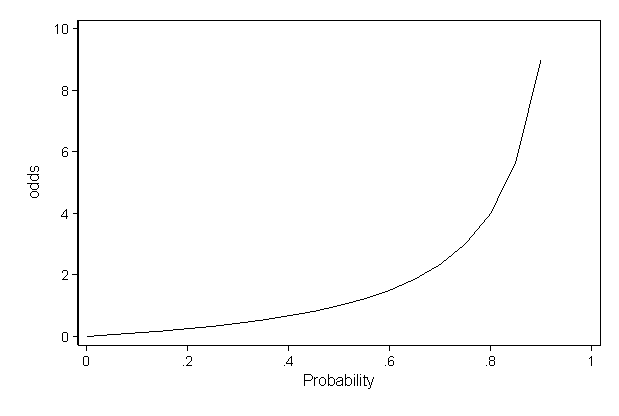



Faq How Do I Interpret Odds Ratios In Logistic Regression
Therefore, it must be between 0 and 1 Thus in comparing 2 groups high risk in unexposed group limits how large ratio can be For example, risk in unexposed group = 07 means maximum risk ratio = 10/07 = 142 Rates are not restricted between 0 and 1The prevalence ratio can also be calculated from the information on CHD and physical activity It is preferable to calculate the prevalence odds ratio when the period for being at risk of developing the outcome extends over a considerable time (months to years) as it does in this example PR = (a/N1) / (c/N0) PR= (50/250) / (50/750) = 30The relative risk is different from the odds ratio, although the odds ratio asymptotically approaches the relative risk for small probabilities of outcomesIf IE is substantially smaller than IN, then IE/(IE IN) IE/IN Similarly, if CE is much smaller than CN, then CE/(CN CE) CE/CN Thus, under the rare disease assumption = () () = In practice the odds ratio is commonly used for




3 5 Bias Confounding And Effect Modification Stat 507



Definition And Calculation Of Odds Ratio Relative Risk Stomp On Step1
A value lower than 100 indicates decreased risk The 95% confidence intervals and statistical The ratio of these two probabilities R1/R2 is the relative risk or risk ratio Pretty intuitive If the program worked, the relative risk should be smaller than one, since the risk of failing should be smaller in the tutored group If the relative risk is 1, the tutoring made no difference at all After converting the odds ratio to a risk ratio, the actual risk is 14 (mortality is 14 times more likely in patients with ICU delirium compared to those without ICU delirium) Because the incidence rate in the nondelirium group is high, the odds ratio exaggerates the true risk demonstrated in the study




Interpreting Odds Ratio Senguptas Research Academy
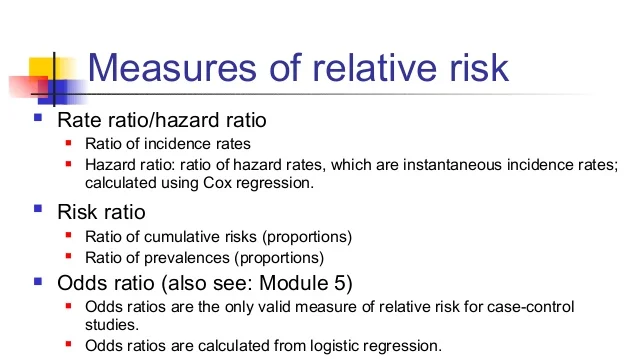



Odds Vs Risk Ratio ただの悪魔の画像
To the Editor Dr Norton and colleagues 1 described significant limitations of odds ratios (ORs) but they did not report one important advantage of ORs compared with risk ratios (RRs) the magnitude of the association between an exposure and a dichotomous outcome is invariant to whether the outcome is defined as event occurrence (eg, death) or nonoccurrenceThe odds ratio ((a/c)/(b/d)) looks at the likelihood of an outcome in relation to a characteristic factor In epidemiological terms, the odds ratio is used as a point estimate of the relative risk in retrospective studies Odds ratio is the key statistic for most casecontrol studies Definition The Odds Ratio is a measure of association which compares the odds of disease of those exposed to the odds of disease those unexposed Formulae OR = (odds of disease in exposed) / (odds of disease in the nonexposed) Example I often think food poisoning is a good scenario to consider when interpretting ORs Imagine a group of friends went out to




Odds Ratio Relative Risk Calculation Definition Probability Odds Youtube




The Difference Between Relative Risk And Odds Ratios The Analysis Factor
Percent increase = (Risk Ratio lower bound – 1) x 100 Percent decrease = (1 – Risk Ratio upper bound) x 100 It's worth stating again when comparing two proportions close to 1 or 0, the risk ratio is usually a better summary than the raw difference Odds Ratios We now turn to odds ratios as yet another way to summarize a 2 x 2 tableFactor When the relative risk associated with a factor is less than 1, then the factor is called a protective factor If the relative risk equals 1, then factor is not associated with the outcome Another statistic similar to relative risk and often used by epidemiologists is the odds ratio a/b c/dAnd a risk of 095 is equivalent to odds of 19 Measures of effect for clinical trials with dichotomous outcomes involve comparing either risks or odds from two intervention groups To compare them we can look at their ratio (risk ratio or odds ratio) or their difference in risk (risk




Odds Ratio Calculator Calculate Odds Ratio Confidence Intervals P Values For Odds Ratios




What Is An Odds Ratio And How Do I Interpret It Critical Appraisal
If we go a step further, we can calculate the ratio between the two risks, called relative risk or risk ratio (RR), which indicates how much more likely is the occurrence of the event in one group compared with the other group Meanwhile, the odds represents a quite different concept The odds indicates how much more likely is an event to occur than not to occur (p/ (1p))The risk ratio In practice, risks and odds for a single group are not nearly as interesting as a comparison of risks and odds between two groups For risk you can make these comparisons by dividing the risk for one group (usually the group exposed to the risk factor) by the risk for the second, nonexposed, group This gives us the risk ratio Examples of measures of association include risk ratio (relative risk), rate ratio, odds ratio, and proportionate mortality ratio Risk ratio Definition of risk ratio A risk ratio (RR), also called relative risk, compares the risk of a health event (disease, injury, risk factor, or death) among one group with the risk among another group
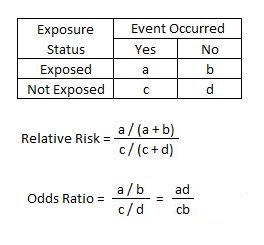



Relative Risk Article
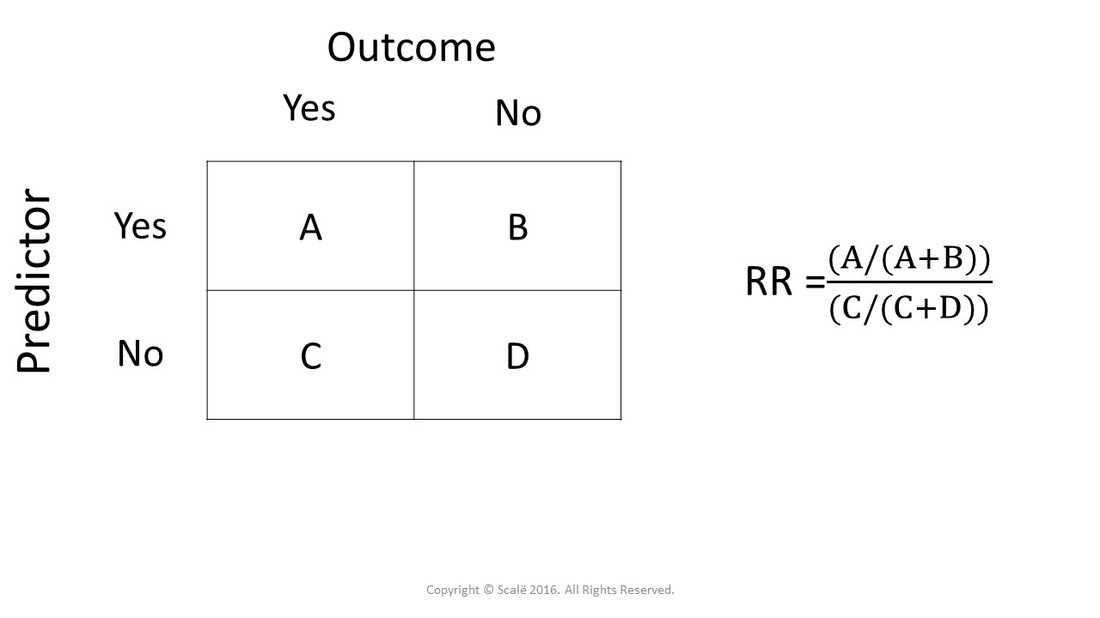



Calculate Relative Risk With 95 Confidence Intervals
A crude odds ratio can be converted to a crude risk ratio risk ratio = odds ratio/(1 − p0) (p0 × odds ratio), in which p0 is the outcome prevalence (risk) among the unexposed Some have applied this formula to an adjusted odds ratio to obtain an adjusted risk ratio 49 This method can produce biased risk ratios and incorrect confidence Risk ratios, odds ratios, and hazard ratios are three ubiquitous statistical measures in clinical research, yet are often misused or misunderstood in their interpretation of a study's results A 01 paper looking at the use of odds ratios in obstetrics and gynecology research reported 26% of studies (N = 151) misinterpreted odds ratios as risk ratios , while aRecovering the cell probabilities from the odds ratio and marginal probabilities The odds ratio is a function of the cell probabilities, and conversely, the cell probabilities can be recovered given knowledge of the odds ratio and the marginal probabilities P(X




Risk Difference Relative Risk And Odds Ratio Quantifying Health
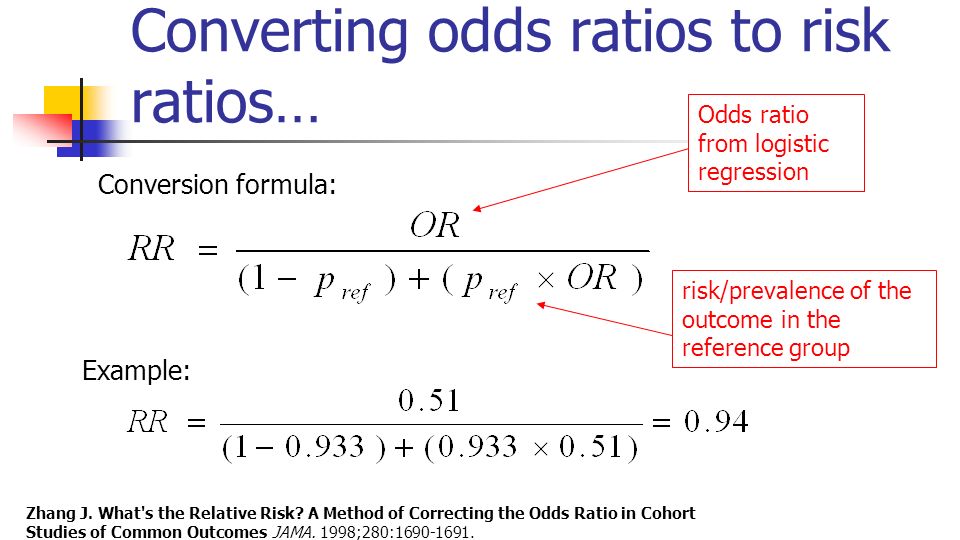



Statistics In Medicine Ppt Download
Relative Risk and Odds Ratio for the obese 3) Overall, you can see that decreasing the baseline incidence will decrease the odds ratio (300 in those who are nonobese versus 129 in those who are obese) Obviously, these results run counter to expected results, putting the onus on the researcher to justify them Similarly, you should find that increasing the incidence will increaseThe more common the disease, the larger is the gap between odds ratio and relative risk In our example above, p wine and p no_wine were 0009 and 0012 respectively, so the odds ratio was a good approximation of the relative risk OR = 0752 and RR = 075 If the risks were 08 and 09, the odds ratio and relative risk will be 2 very different numbers OR = 044 and RR = 0 RelativeAn odds ratio of 112 means the odds of having eaten lettuce were 11 times higher among casepatients than controls Because the odds ratio is greater than 10, lettuce might be a risk factor for illness after the luncheon The magnitude of the odds ratio
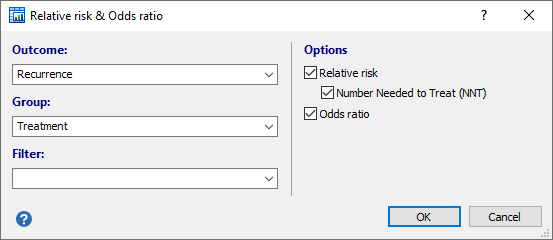



Relative Risk Odds Ratio




Statistics Part 13 Measuring Association Between Categorical Data Relative Risk Odds Ratio Attributable Risk Logistic Regression Data Lab Bangladesh
Odds Ratios vs Risk Ratios Posted on by StatsBySlough From the previous post, we understand that Odds Ratios (OR) and Risk Ratios (RR) can sometimes, but not always be interpreted in the same way We even saw that scientific studies made the mistake of interpreting odds ratios as risk ratiosOdds ratio and relative riskFor example, if you are normally on call 2 out of 7 days in a week, then the odds of you being on call on a certain day of the week is (2/7)/ (5/7) = 040 Note that this differs from risk (or probability) the risk of being on call is equal to (# of call days )/ (total # of days in a week) = 2/7 = 0285
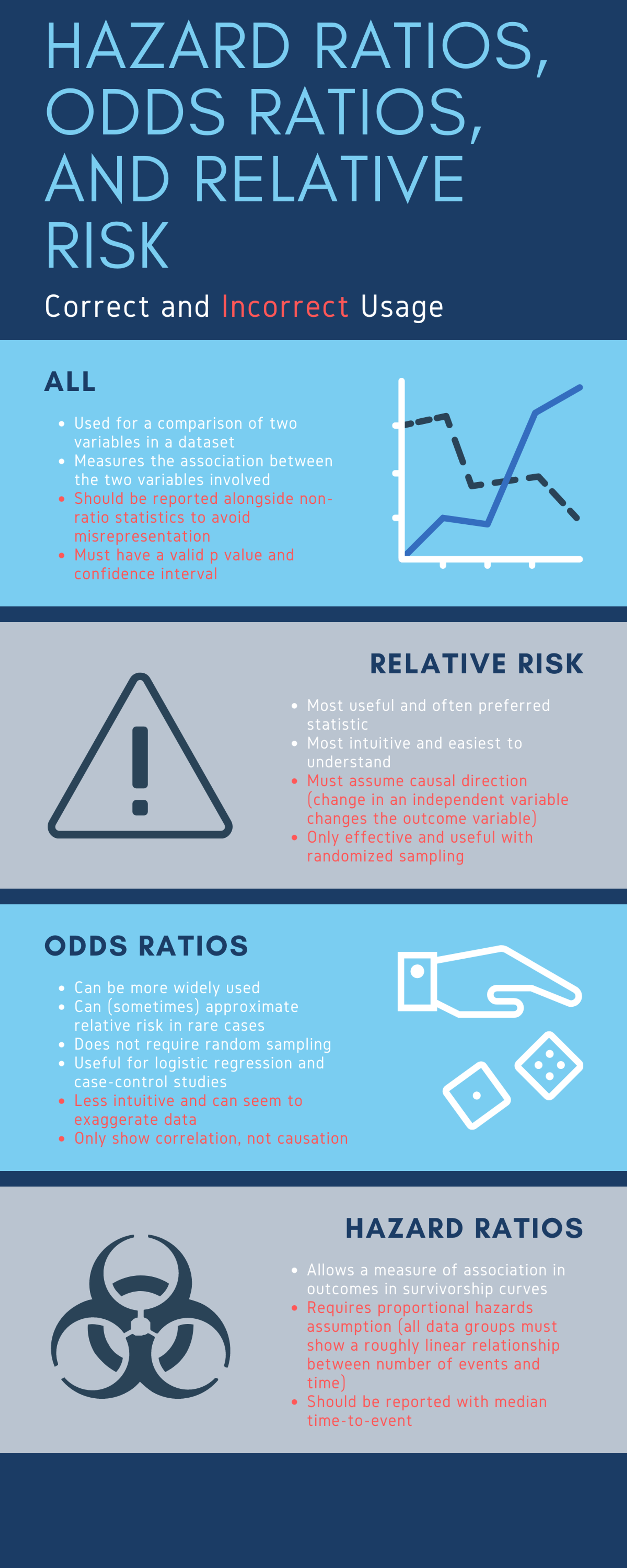



Cureus What S The Risk Differentiating Risk Ratios Odds Ratios And Hazard Ratios



27 Sep 01 Draft
With an odds ratio, the outcome can be the starting point with which we can determine the relative odds of someone having been exposed to a risk factor Alternatively, we can also use it to describe the ratio of disease odds given the exposure status Once we know the exposure and disease status of a research population, we can fill in their corresponding numbers in the following tableRelative Risk and Odds Ratio Calculator This Relative Risk and Odds Ratio calculator allows you to determine the comparative risk of the occurrence of a significant event (or outcome) for two groups For example, suppose the members of one group each eat a kilo of cheese every day, and the members of another group eat no cheese, and you haveFor example, if 80 out of 100 exposed subjects have a particular disease and 50 out of 100 nonexposed subjects have the disease, then the odds ratio (OR) is




In A Meta Analysis Of Adjusted Estimates From Observational Studies Can I Pool Or With Hr And Rr Probably Not How Can I Transform Hr To Or



44 45 46 47 48 49 50 51 52 53 54 55 Review 1 Similar To The Risk Ratio Here Are The Guidelines For Calculating A Confidence Interval For 2 Independent Samples And The Odds Ratio As The Parameter Of Interest 2 Note That Calculation Of The Confidence
Comparison Risk Ratio and Rate Ratio Risk must be a proportion;As an extreme example of the difference between risk ratio and odds ratio, if action A carries a risk of a negative outcome of 999% while action B has a risk of 990% the relative risk is approximately 1 while the odds associated with action A are more than 10 times higher than the odds in doing B (1% = 01% x 10, odds ratio calculationRelative Risk (RR) is a ratio of probabilities or put another way it is one probability divided by another Odds Ratio (OR) is a ratio or proportion of odds I just remember that odds ratio is a ratio of odds and probability isn't a ratio of odds (AKA it is the other option)




Box 9 2 A Calculation Of Rr Or And Rd
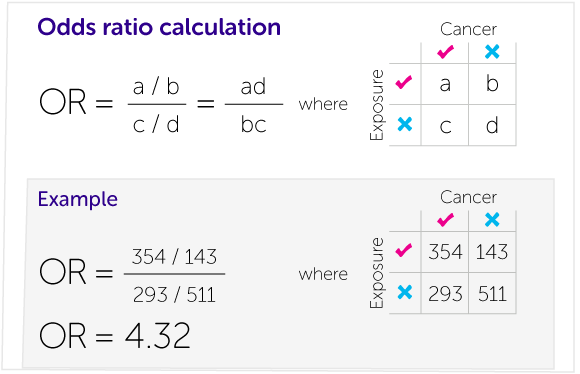



Our Calculations Explained Cancer Research Uk
The odds ratio (OR) is the ratio of the odds of cancer in smokers to the odds of cancer in nonsmokers OR = (a/b)/(c/d) = (ad)/(bc) The risk ratio (RR), also called the relative risk, is the ratio of the probability of cancer in smokers to the probability of cancer in nonsmokers RR = (a/(ab))/(c/(cd)) = (a(cd))/(c(ab))Ref=reference category Table A PORs are reciprocals of each other and pvalues are the same regardless of which outcome (yes or no) is modelledThe odds ratio is commonly used as the effect measure for crosssectional analytical surveys, although the risk ratio is more appropriate for this type of study as it more readily interpretable




Measures Of Effect Relative Risks Odds Ratios Risk Difference And Number Needed To Treat Sciencedirect




Odds Ratios Vs Risk Ratios Stats By Slough
For example, a risk of 05 is equivalent to an odds of 1;
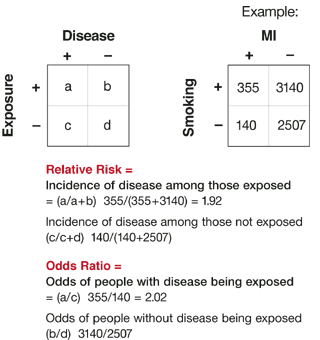



Relative Risks And Odds Ratios What S The Difference Mdedge Family Medicine
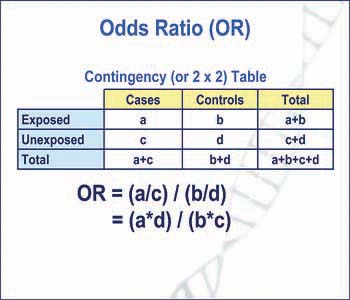



Epidemiology Odds Ratio Or Bean Around The World




Definition And Calculation Of Odds Ratio Relative Risk Stomp On Step1




Odds Ratios The Odd One Out Stats By Slough




Calculation And Interpretation Of Odds Ratio Or And Risk Ratio Rr Youtube




How Can We Convert Rate Ratio To Odds Ratio




What Is An Odds Ratio And How Do I Interpret It Critical Appraisal
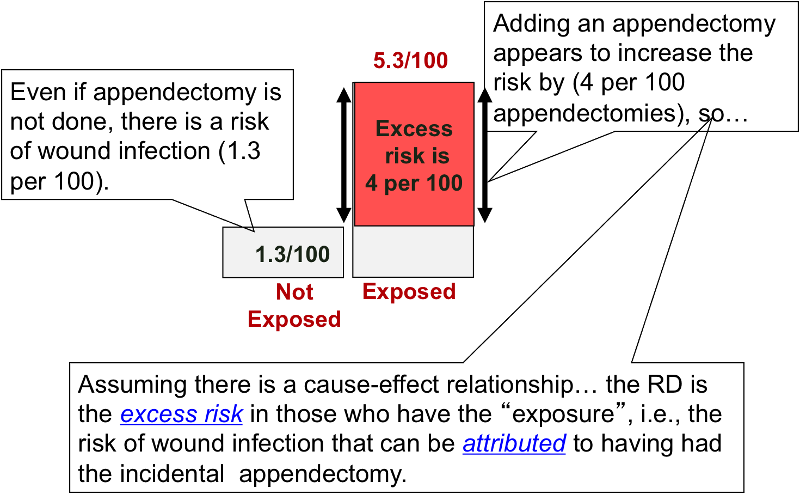



Risk Differences And Rate Differences




Tips For Teachers Of Evidence Based Medicine Understanding Odds Ratios And Their Relationship To Risk Ratios Springerlink




Ppt Relative Risk Increased Risk And Odds Ratios Powerpoint Presentation Id




Relative Risk And Odds Ratio
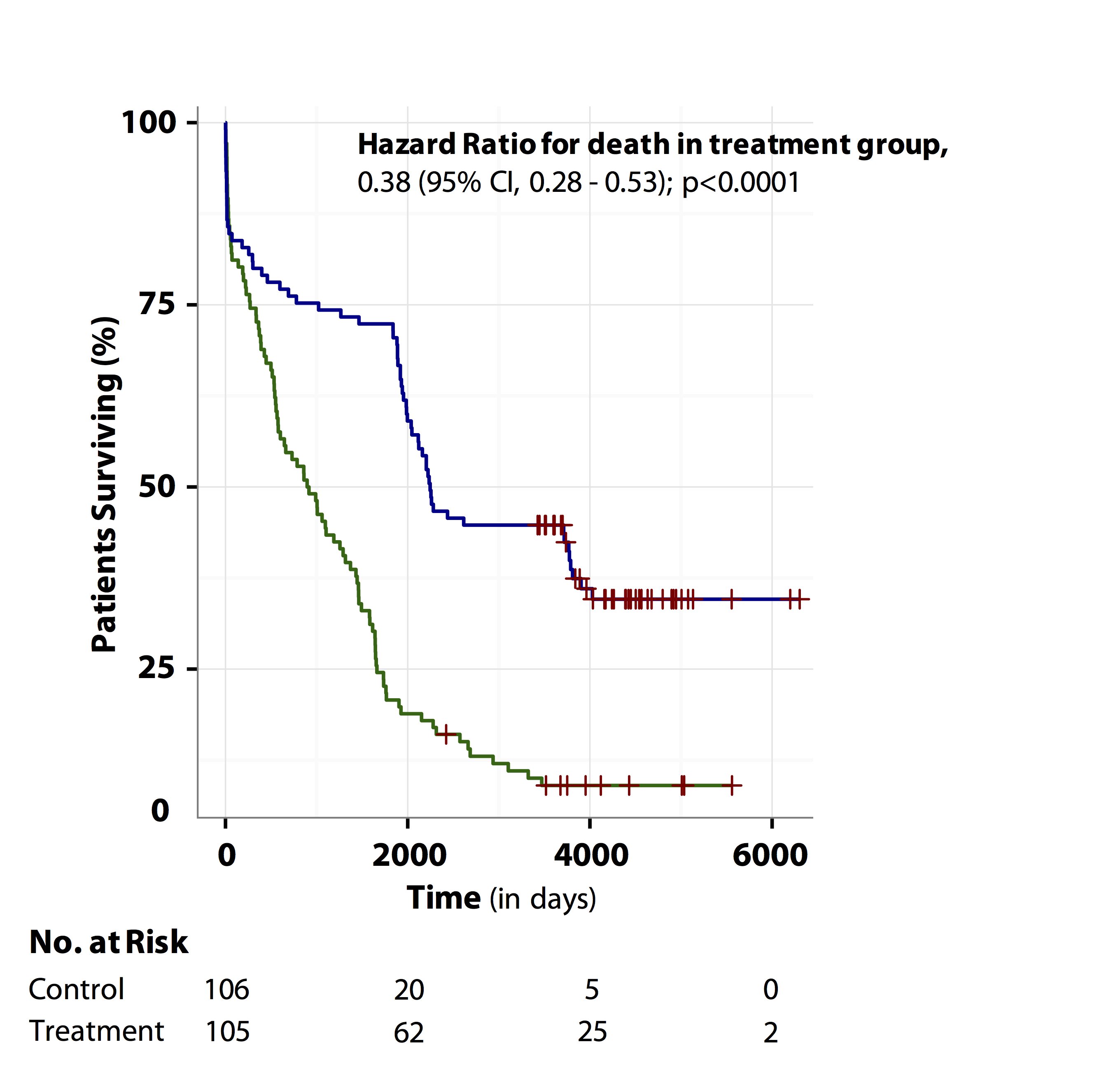



Tutorial About Hazard Ratios Students 4 Best Evidence




When Can Odds Ratios Mislead The Bmj




How To Calculate Odds Ratio And Relative Risk In Excel Statology



Odds Vs Risk Ratio ただの悪魔の画像




How To Calculate Odds Ratio And Relative Risk In Excel Statology




Calculation Of Ror Reporting Odds Ratio Contingency Table And Formula Download Scientific Diagram
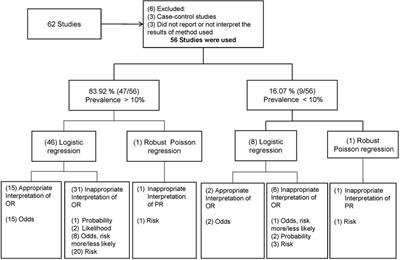



Frontiers Odds Ratio Or Prevalence Ratio An Overview Of Reported Statistical Methods And Appropriateness Of Interpretations In Cross Sectional Studies With Dichotomous Outcomes In Veterinary Medicine Veterinary Science



1




3 5 Bias Confounding And Effect Modification Stat 507
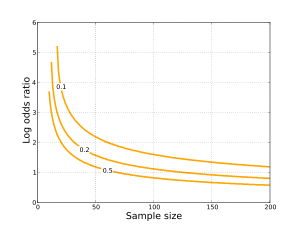



Odds Ratio Wikipedia




The Odds Ratio Calculation Usage And Interpretation Biochemia Medica




How To Calculate Odds Ratio In Microsoft Excel




How To Calculate Odds Ratio In Microsoft Excel




Calculation Of Odds Ratios Or And Relative Risk Rr Derived From Download Scientific Diagram
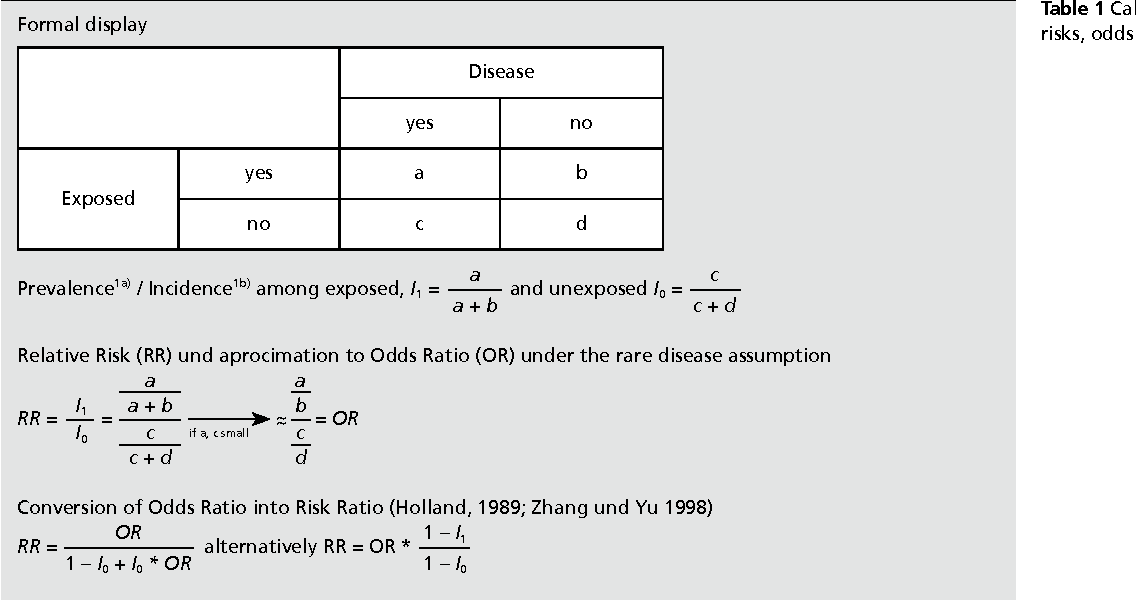



Pdf When To Use The Odds Ratio Or The Relative Risk Semantic Scholar




Odds Ratios And Log Odds Ratios Clearly Explained Youtube



Relative Risk Ratios And Odds Ratios




Chapter 6 Choosing Effect Measures And Computing Estimates Of Effect Cochrane Training



2
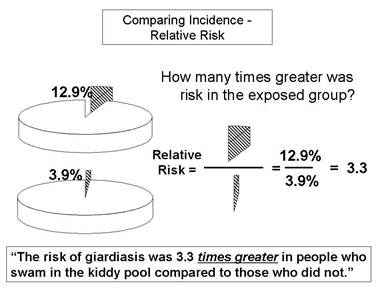



Relative Risk And Absolute Risk Definition And Examples Statistics How To



Relative Risk Wikipedia




How To Interpret And Use A Relative Risk And An Odds Ratio Youtube
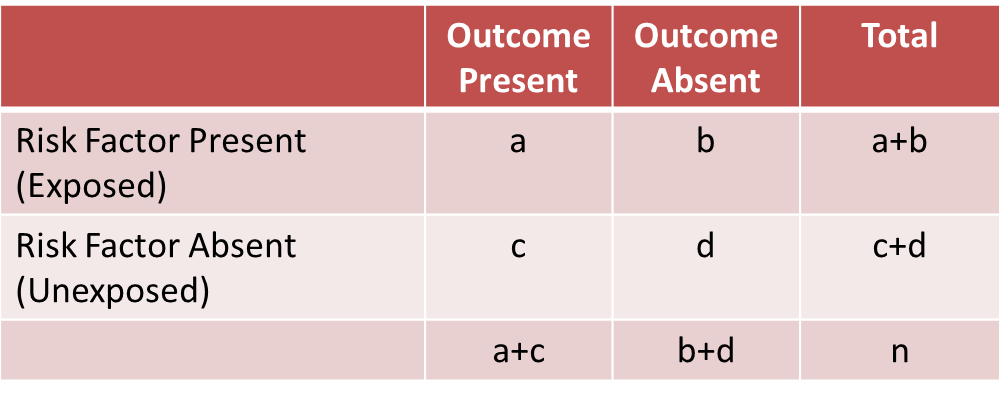



A Stratified Analysis




Math Formula To Reproduce A Plot Comparing Relative Risk To Odds Ratios Cross Validated




Help With Differentiating Relative Risk Odds Ratio Ar Usmle Forums




The Odds Ratio Calculation Usage And Interpretation Biochemia Medica
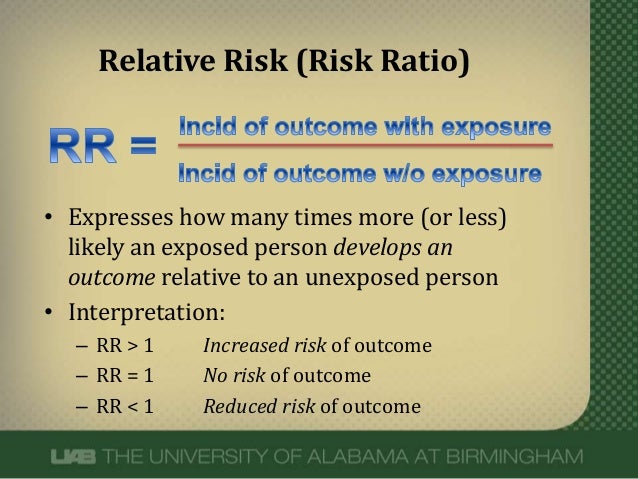



What Does An Odds Ratio Or Relative Risk Mean



1
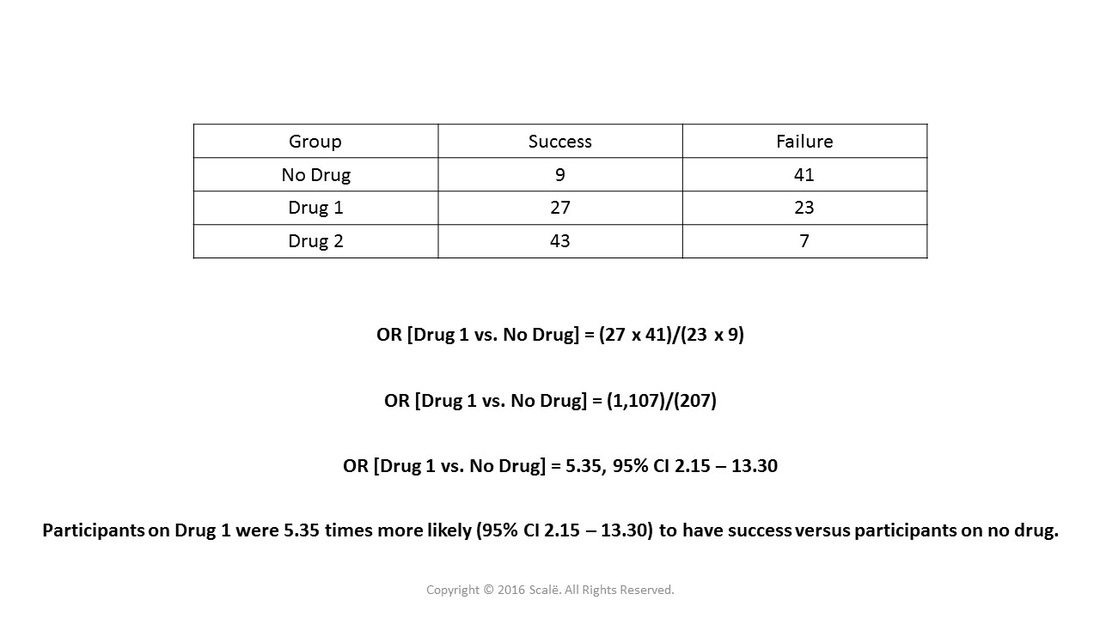



Use And Interpret Unadjusted Odds Ratio In Spss




Relative Risk And Odds Ratio Usmle The Journey



1
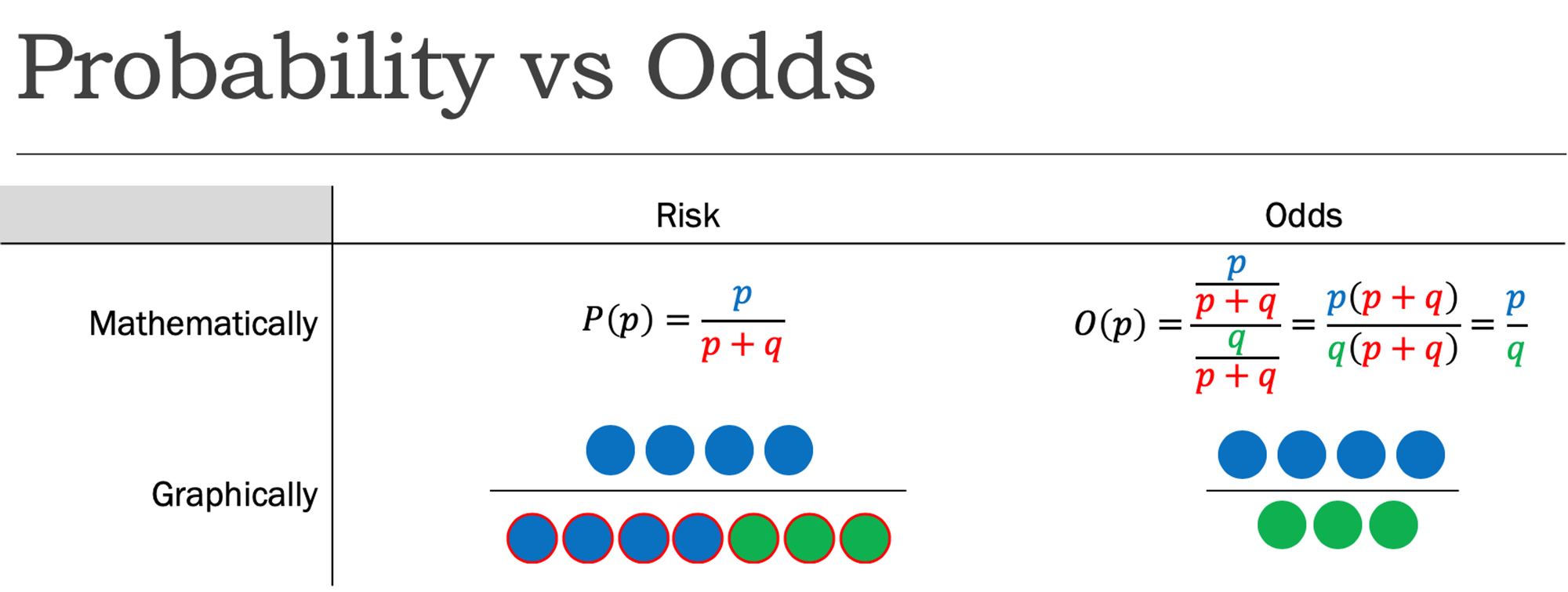



Cureus What S The Risk Differentiating Risk Ratios Odds Ratios And Hazard Ratios




A Beginner S Guide To Interpreting Odds Ratios Confidence Intervals And P Values Students 4 Best Evidence



Confluence Mobile Wiki Ucsf




Odds Ratio Wikipedia
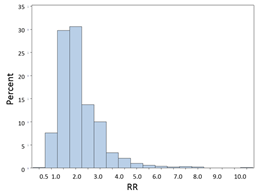



Confidence Intervals For Risk Ratios And Odds Ratios




Definition And Calculation Of Odds Ratio Relative Risk Stomp On Step1
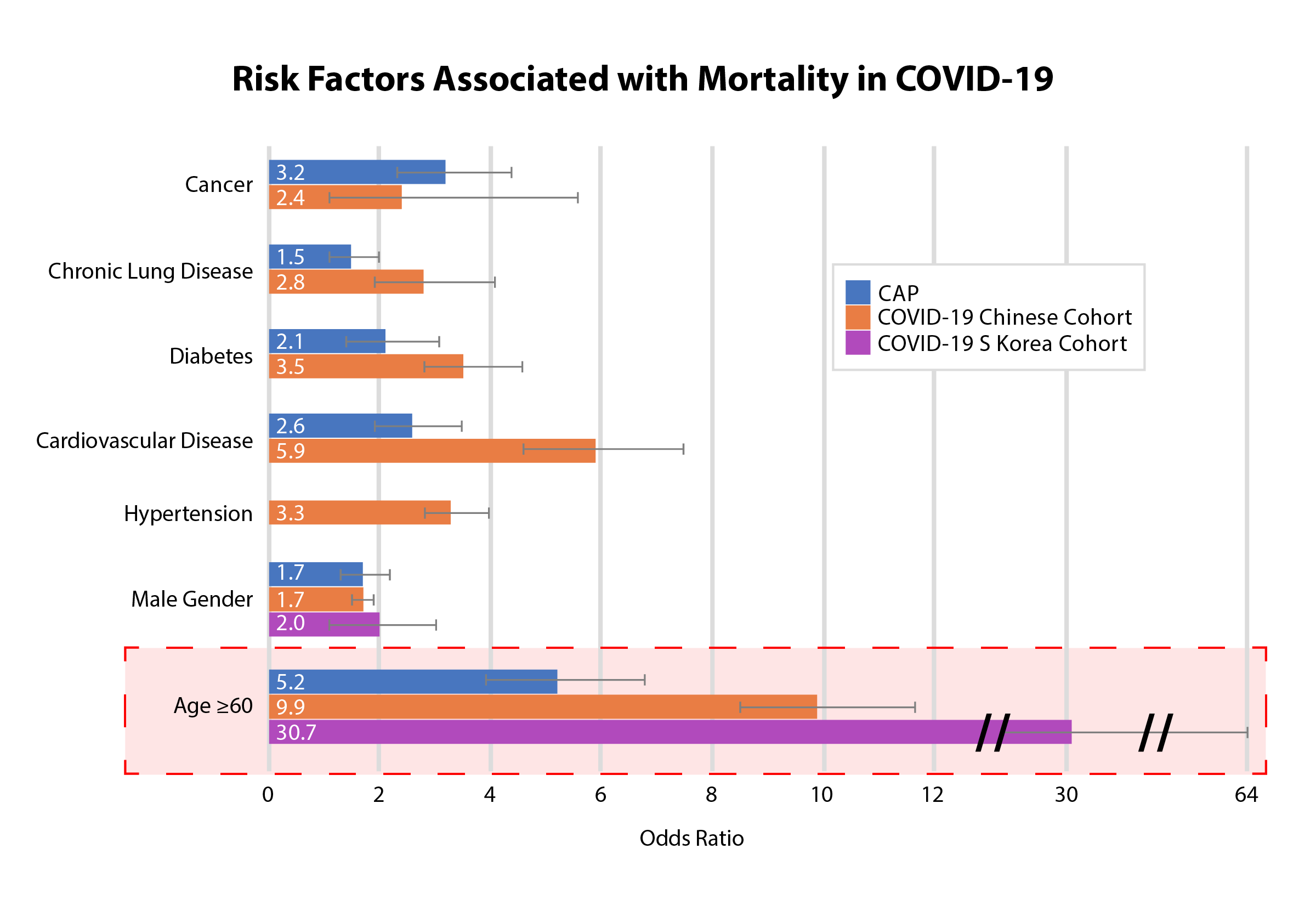



Nnt Review Odds Ratios Of Mortality Risk Factors
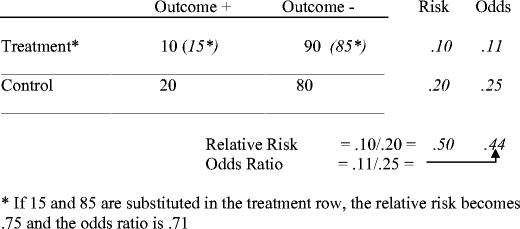



Tips For Teachers Of Evidence Based Medicine Understanding Odds Ratios And Their Relationship To Risk Ratios Springerlink




Odds Ratios Vs Risk Ratios Stats By Slough




Calculation Of Odds Ratios Or And Relative Risk Rr Derived From Download Scientific Diagram




Odds Vs Risk Ratio ただの悪魔の画像
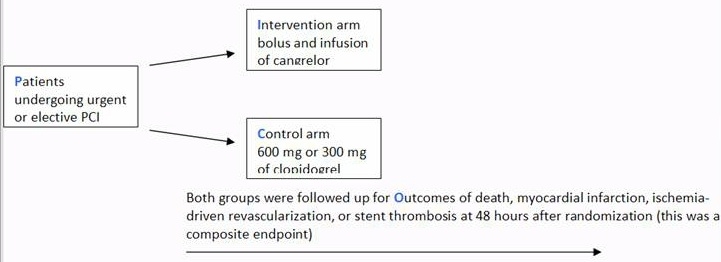



A Beginner S Guide To Interpreting Odds Ratios Confidence Intervals And P Values Students 4 Best Evidence




Converting An Odds Ratio To A Range Of Plausible Relative Risks For Better Communication Of Research Findings The Bmj



Risk Ratio Vs Odds Ratio Hunter 19 Notes And Things




The Odds Ratio Calculation Usage And Interpretation Biochemia Medica
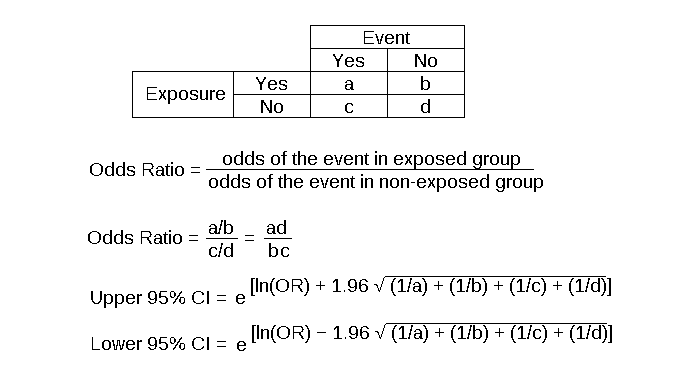



Odds Ratio Article




Odds Ratio The Odds Ratio Is Used To Find The By Analyttica Datalab Medium




Odds Ratio Litfl Ccc Research
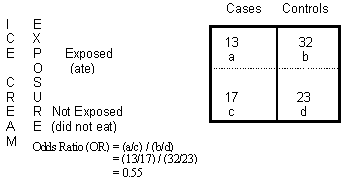



Odds Ratio Calculation And Interpretation Statistics How To




Pdf When To Use The Odds Ratio Or The Relative Risk Semantic Scholar




Odds Ratios And Risk Ratios Youtube



Number Needed To Treat
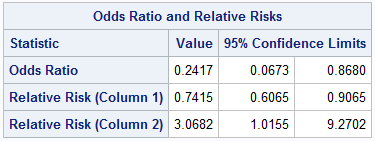



Statistics Basics Odds Ratio And Relative Risk Calculation In Excel Bi Practice




Measures Of Effect Relative Risks Odds Ratios Risk Difference And Number Needed To Treat Sciencedirect




Simple Way To Visualise Odds Ratios In R Stack Overflow




R Calculate And Interpret Odds Ratio In Logistic Regression Stack Overflow




Calculating The Risk Ratio Odds Ratio And Risk Difference In A Randomised Controlled Trial Youtube




Relative Risk Wikipedia




Math Formula To Reproduce A Plot Comparing Relative Risk To Odds Ratios Cross Validated



27 Sep 01 Draft
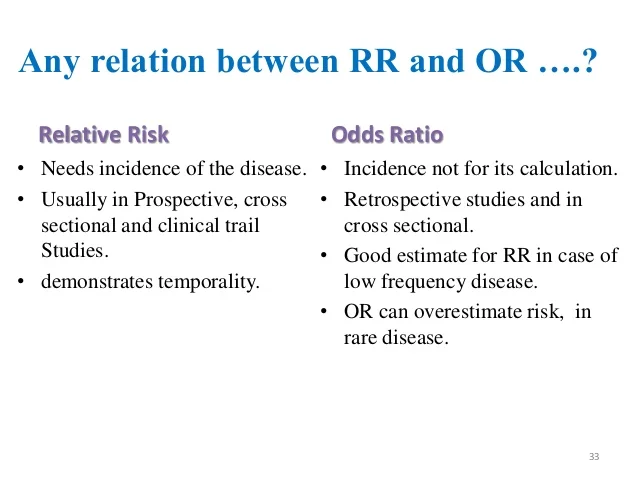



Measuring Of Risk




Calculation Of Relative Risks Rr And Odd Ratios Or Download Table




Calculate Relative Risk With 95 Confidence Intervals
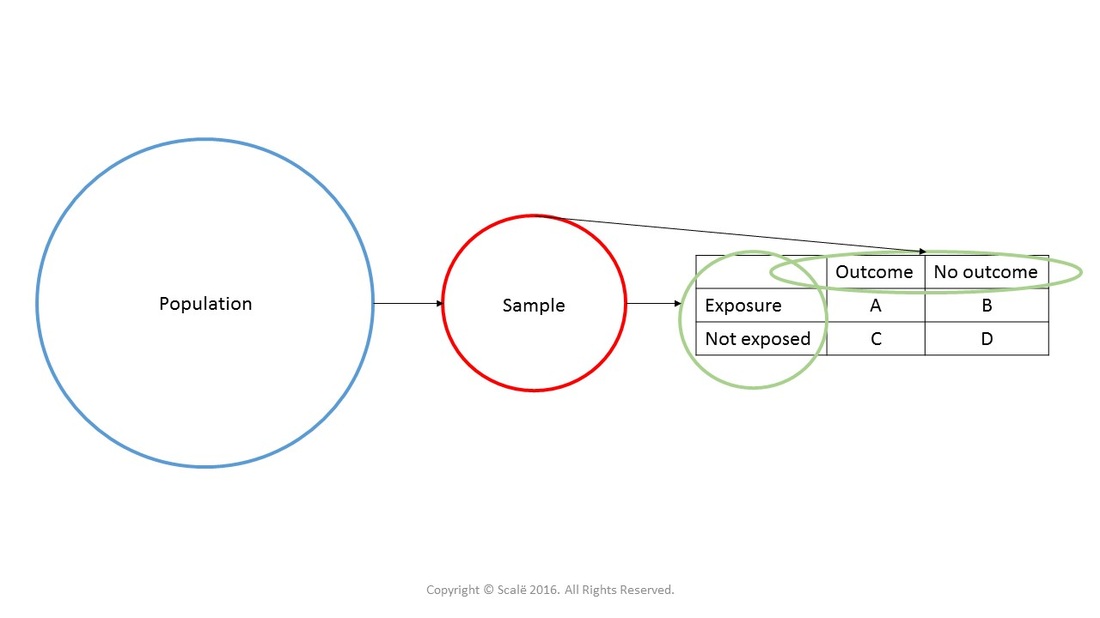



Calculate Relative Risk With 95 Confidence Intervals




How To Calculate Odds Ratio And Relative Risk In Excel Statology




How To Calculate Odds Ratio And Relative Risk In Excel Statology




Relative Risk Odds Ratios Youtube




Meta Analysis Odds Ratio



0 件のコメント:
コメントを投稿